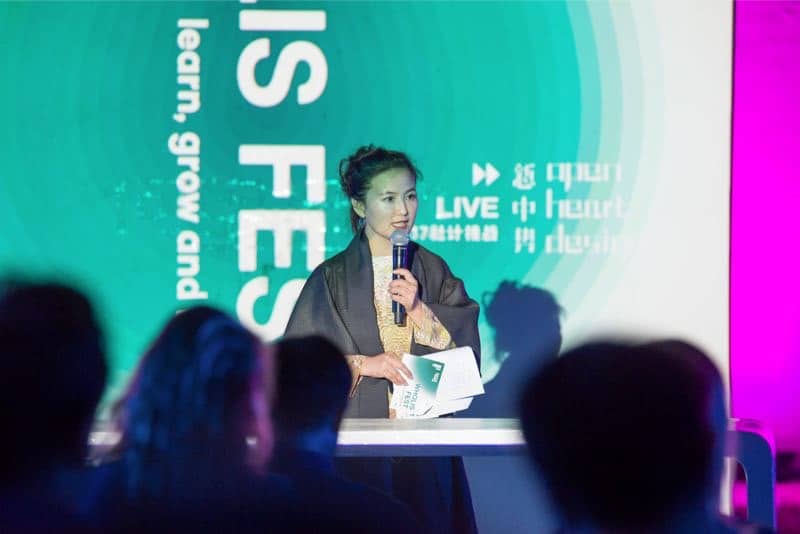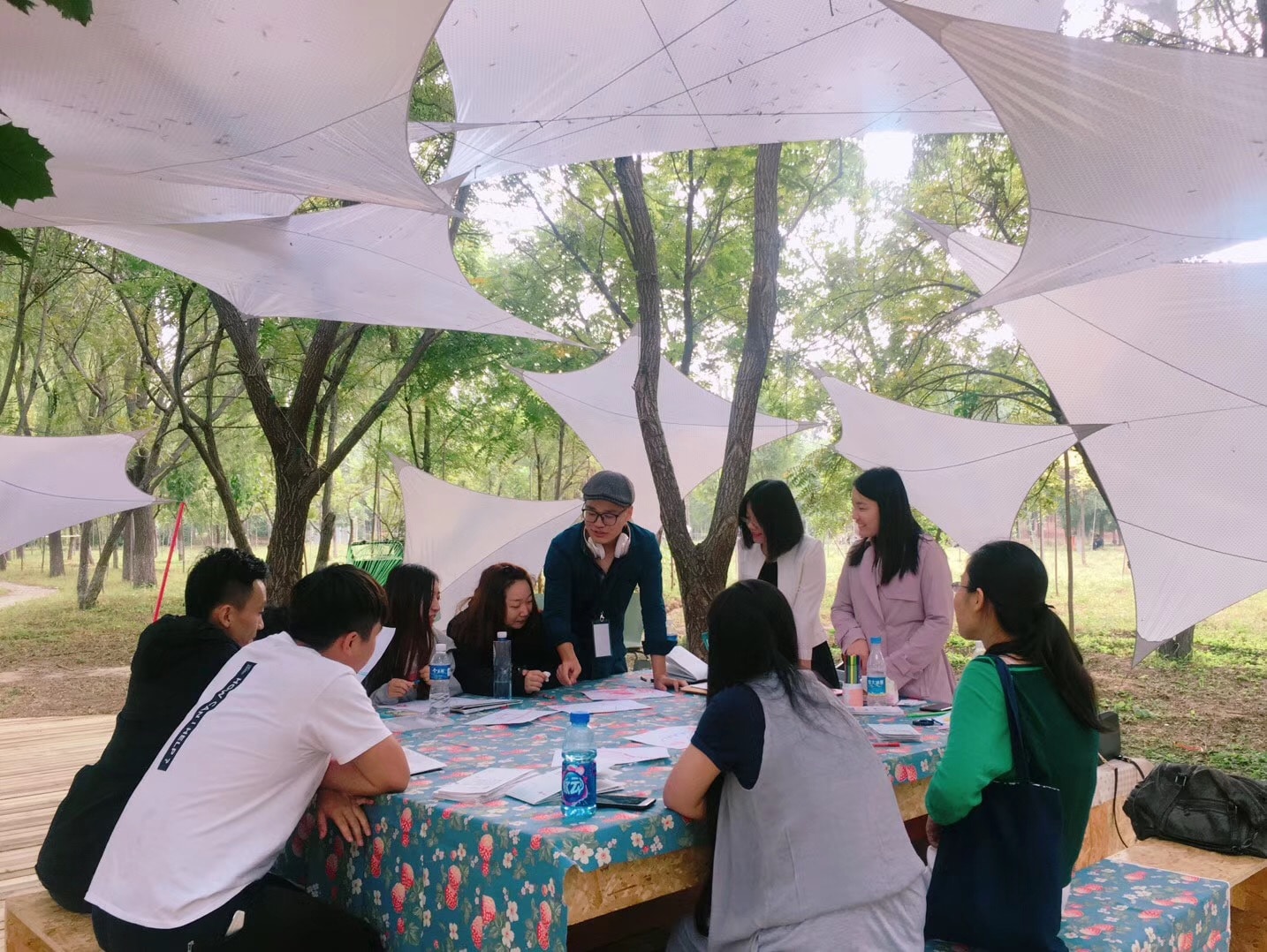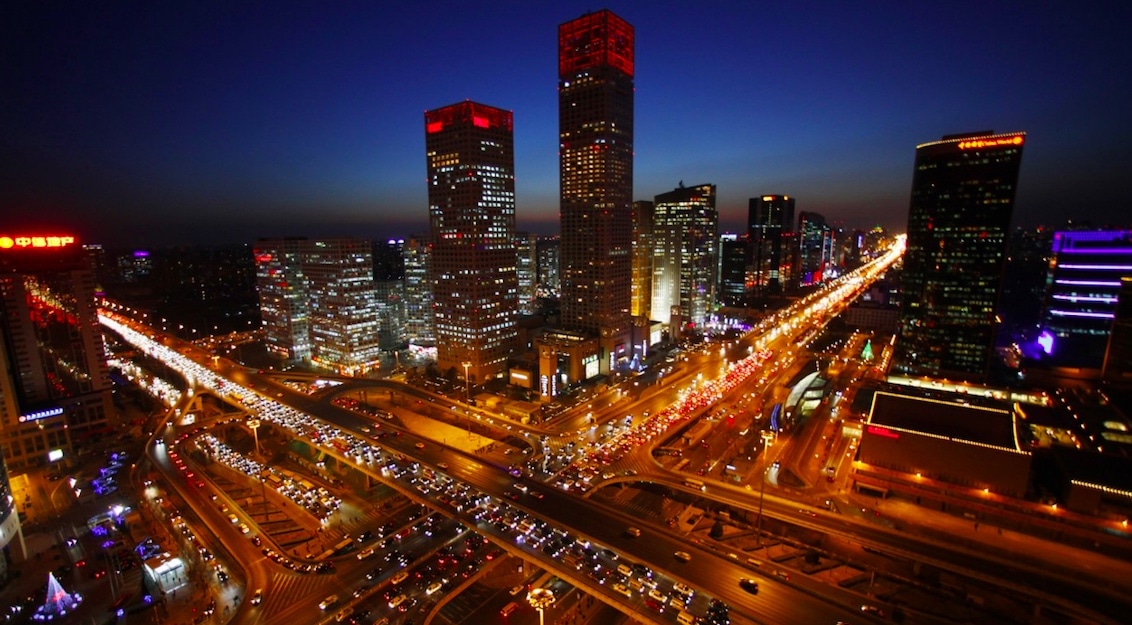
Yanling Duan, founder OHDA
impactmania interviewed writer, presenter, curator, and entrepreneur, Yanling Duan, who founded Open Heart Design Alliance (OHDA) to drive design and technology that offer soulful solutions to societal issues. She spoke with impactmania about Beijing Design Week and the future of design in China.
BY PAKSY PLACKIS-CHENG
Art and design have evolved significantly in the last decade in China. What have been some of the changes you have seen?
The last two or three generations of designers have been working on large-scale projects in a surprising speed. It is almost impossible to grasp the scale and speed. Even though the mainstream media covers it, it’s always just touching the surface.
Then, there are more than 4,000 museums in China, half of them built in the last 10 years. The focus has been mainly on the “hardware”: the space and buildings. These days, the attention has shifted to the “soft side” — how to fill the space with quality content.
Museums are mostly government funded, correct?
Yes, there are few private museums. However, many of them are very impactful, such as the Long Museum in Shanghai for contemporary art and True Color museum for contemporary Chinese literature, art, and design. Many more are popping up still: The Song museum opened last September [2017] by media mogul Wang ZhongJun from Huayi Brothers Media.
The art market itself must have changed dramatically with the rise of the new rich.
One of the most significant changes is that many Chinese contemporary artists were looking for western validation 10 years ago. Today the demand for Chinese art and antiquities among Chinese buyers is souring. I personally feel the downside of it is the new rich collectors spoiled a generation of young artists and the market is much more over-priced and commercial than in Northern Europe.
Chinese contemporary art is relatively new. Today, you will see design mentioned more in the media. There is more awareness of how design creates innovation.
Could you give me an example of a design project you’ve seen that generated social impact?
One of the most important initiatives that I am personally involved with is the launch of Beijing Design Week (BJDW). Today it is one of the ten most popular Beijing public events by the Beijing government. The event is also highly rated in the international design circles.
Ten years ago when we were launching the Beijing Design Week, there were questions like, what is a “design week”? By blending the media, government, and business networks, it created a “Western” format of Design Week in Chinese context. It has grown into the most influential design festival formula for many cities to follow.
It is definitely a brand that has seen success for raising awareness, building platforms, and forming communities. The nature and focus of Beijing Design Week is changing every year, but it has really put Beijing and China on the map of the design world.
Is Beijing Design Week (BJDW) mainly for professionals or the general public?
The event was designed to mobilize the community of designers to showcase design work in a more cultural context and to highlight the value of quality and creativity among the general public. There is the Design Hop program, inspired by my yearly trips to Milan and Berlin Design Week — featuring my design show broadcasted on China Central Television. Today the Design Hop participants have evolved into a collaboration network during and beyond the entire Beijing Design week, which is an important part of the Open Heart Design Alliance (OHDA) today.

Beijing Design Week 2017
What are the objectives of the hosts: the Ministry of Culture and the Beijing municipal government? What are they hoping to get out of Beijing Design Week?
The government believes design is the accelerator for economic growth. Perhaps design in contrast to art is considered a bit “safer” and less ”troublesome”. In recent years, becoming a designer is a very alluring “Chinese dream”. I think 4-million design student graduate every year in China.
4-million?
Yeah. It’s becoming a very popular profession with strong social status compared to ten years ago — an amazing change.
You’ve lived and worked in the U.S. and in Europe. Do you see that it’s becoming on par with how we view designers in the West?
I feel the Chinese society is drunk with rapid growth of wealth and “consumption upgrade” made design a fashionable concept. Sustainable living and responsible consumption are still very foreign ideas. But personally, I feel that we have to face the responsibility to live consciously in the world’s most populous country.
Fortunately there is an undercurrent trend of “tradition revival” happening in China. The traditional Chinese view of life sees the world as an inter-related organism. I was surprised how much we have forgotten this fundamental principle in our contemporary daily lives. That’s why I was excited to introduce a circular economy network and Scandinavian sustainable developers to this year’s Beijing Design Week. In the conference, interesting enough, many Chinese designers found the idea of circular economy very familiar: this whole process of reuse, recycle, and return — isn’t that a Taoist — “Yin Yang” transformation model? It is circular and harmonious. Maybe we all want the same in the end, but call it different names or realize it at different stages.
How do we find a balance between technical and aesthetics terms and truly move to a more holistic way of design? That, of course, is a much more challenging topic to take on. I do see young designers realizing that we need to think about sustainability.
Do you see that people are gravitating towards embracing the traditional and incorporating the modern?
Yes, I expect this to be the mainstream view in two-five years. Even today, there is the beautiful True Color Museum in Suzhou. The owner [Chen Hanxing] is a very good friend of mine — he is an artist, entrepreneur, and also a tea master.
While he was hosting this beautiful tea master gathering seven years ago, he told me that he had to invite Japanese, Taiwanese, and Korean masters. Chinese tea masters were few. But this year, 400 qualified tea masters are taking center stage. The best ones are all coming from Mainland China, I guess that shows how fast the trend is happening in China in a nutshell.
That’s very encouraging, right?
Very, that’s what China has to offer right? The country’s richness of art and culture starts resurfacing. Chinese design has been searching for its own identity for a long time. “In order to grow, a tree needs strong roots” as the Taoist saying goes. To create something truly original, one cannot forget the common ground.
Absolutely, with the globalization of art, the cultural heritages of countries have lost a lot to an overriding set of look and feel.
Exactly. A few years ago we saw that the aesthetics in interior design looked like everything on AirBnB. We have to remain cultural-diverse, similar to the importance of biodiversity on the planet. The challenge is how to distill heritage with a modern lens in order to create something new. In the past 10 years, I saw how the market was changing from “the West as the guiding star” to randomly grabbing Chinese elements to exploit tradition. Today, there is a much more sophisticated approach and standard of aesthetics that is evolving.
Let’s talk a bit about Open Heart Design Alliance. You created this three years ago, what’s your vision for the OHDA platform?
Before I founded OHDA, I was suffering a personal and professional crisis. As an evangelist for Italian design and Scandinavian innovation for a decade, I was working as a cultural transmitter to the Chinese audience. I started to ask myself “Is this really what China needs?” Do we really need another Italian chair to realize the “Chinese Dream,” whatever that means.
I belong to a generation growing up exposed mainly to the Western schooling: seeing I Ching as hocus-pocus, Confucius backwards, classic esthetics irrelevant to modern living…After years of un-learning and re-learning, I decided to explore a more neutral perspective. That resulted in innovative research for designing for China. That is what OHDA (XIN ZHONG SHI) means in Chinese, punning the pronunciation that sounds as “New Chinese Design”.

Yanling Duan at opening ceremony of the Beijing Design Week 2017
OHDA launched as a community of designers participating at the 2015 Open Heart Design Annual exhibition “the mindful wave” that I curated for the Beijing Design Week. It gradually evolved into an open platform for trusted cross-disciplinary collaborations. We started to host talks, events, and later launched OHDA Design Challenge program to offer social design services for partners — from businesses to government institutions.
From 2017, OHDA has been invited to work with UNESCO’s International Center for Creativity and Sustainable Development in Beijing, BJDW Partner City Program, and Yinglet Youth Program by Song Qingling Foundation. This has given us a unique position as the transmitter between the international, the professional, and the governmental.
You mentioned the role of the government. This is a critical one. What are even the steps to engage with the Chinese government?
My Beijing Design Week experience taught me how to balance different partners with political, social, and professional demands and needs. The cross-pollination process can be a struggle. The complicated maze is challenging to those who are dreaming to land in any China’s lucrative development projects. Interested parties can contact us at OHDA, we may be able to help support the efforts.
Give me an example of how innovation is embraced by the general public,
I have a friend from Sweden, who visited China two weeks ago. He said, “You are in the first country that entered this cashless world.” Before leaving the house, I used to take my keys, wallet, and cellphone. Now, one cellphone does all the work. In China, we pay everything with WeChat Pay. It happened all in the last one or two years.
It is seamless and truly changed people’s lives. We buy and share information with thousands of businesses within that platform. A project in China has to represent collective work and it has to make a big impact. This is a country that doesn’t traditionally value the personal heroism. This is of course historic.
It is interesting that you’re mentioning “personal heroism”, because in the U.S., people are so focused on the social entrepreneur, versus Europe, where we speak more about the social enterprise. It is about the collective, the group, not about the founder or entrepreneur — the hero.
Yeah, the European model would be more in line with China.

A Beijing Design Week experience with the OHDA innovation camp
What has been a surprising learning for you building OHDA?
To believe in the power of the heart; I have had lots of spiritual and history lessons. I feel that we are reaching a point where we stop putting so much on rational thinking. I discovered a very holistic world that contradicts with my formal education.
Give me an example of that contradiction, what did you find?
These last three years put me on a path that made me realize that whenever we’d talk about sustainability, we have to talk about people. We will gravitate toward ideas leading with our hearts rather than 3D printing machines.
I also believe who we are, is more important than what we do. As we learn, adapt, evolve, we will pick up more new challenges and even change course in the professional path more frequently.
We always ask our interviewees who’s left an imprint on their professional DNA. What I hear from you is that your profession came out of a changed personal DNA.
Yes. I have to thank one of the many amazing teachers, Theodore Zeldin. He wrote The Intimate History of Humanity. As his only mentee in China conducting Oxfordmuse dinners bringing strangers together for heartfelt conversations in past 10 years, I am fully convinced that “Each stranger can be a friend you’re about to meet”— these teachings really influenced how I interview, how I write, how I stage exhibitions, how I treat people and build teams on daily basis.
He encourages people to expose their vulnerability. If you are in it for the show and pose yourself, you actually have nothing learned in the whole interaction. There is definitely a need for women in China to have role models that are not a TV stars.
As for the “heart” part, I grew more inclined to adopt the eastern world view, thanks to all my spiritual and academic teachers, especially my Taiji Master who taught me to value the unformed energy as much as the physical form. In the world of design it might sounds a little ironic, but ultimately it makes sense to me on a very personal level.

Beijing Skyline
I’ve been speaking with people about urbanization and how to sustain livability in cities. Have you seen solutions that support living and working in the city, because it all has to do with how we design these cities and how we design our lives.
From a European perspective, the infrastructure in Beijing today is almost unlivable. It spreads out like a pancake as Beijingers say. For example, innovations like Mobike [the world’s largest bike sharing operator] has changed Beijing.
The City’s central government issued a new plan recently: it will be moving the governmental institutions out of the center to make space for cultural and creative development. That provides a great challenge and opportunity for planners and designers. The city will be greener, quieter, and cleaner in ten years, for sure. I guess it will be more cosmopolitan than it is today.
How about co-living and co-working?
The co-working and co-living trend is similar to the rest of the world. The Chinese co-living is slightly different. For example, it will be very internet-based. There is Ziru. The Company turned apartments into smaller units. Once you become a member, you are not co-living in one place, but you are co-living within this network. Beijing is huge and eventually when you change jobs, you will have to move. The Ziru network allows you to choose a new location within this network quickly and conveniently.
In China — you mentioned it very well — it’s not going to be about these startup entrepreneurs, like AirBnB. It’s going to be a social enterprise or even a governmental enterprise. China is a huge market; you need a very stable foundation.
China is undergoing tremendous changes. Especially now with China’s desire to be so more green, the transition will mean hardship for a lot of people for a long time. Do you feel the country is making a serious attempt?
Yes, what attracted me to the projects is that it should lead to the ability to contribute some of the resources and expertise from the design industry to solve these environmental issues.
China has launched a series of radical policy enforcing sustainable development. The country is determined to make up for what it hasn’t been doing for the past 30 years.
This is why OHDA is preparing a Design Challenge for the Capital of Design China Museum together with UNESCO’s International Center for Creativity and Sustainable Development. In China, things are always happening at a larger scale.

